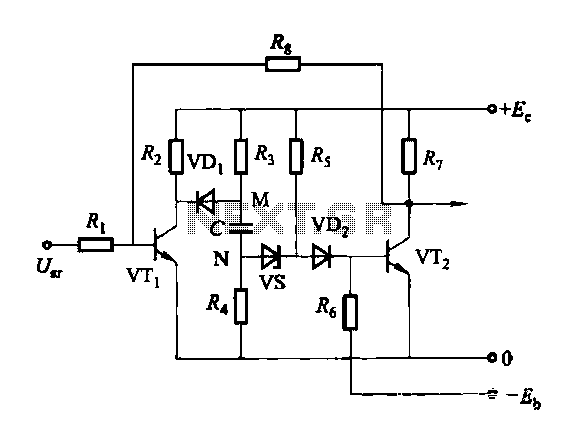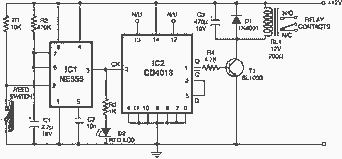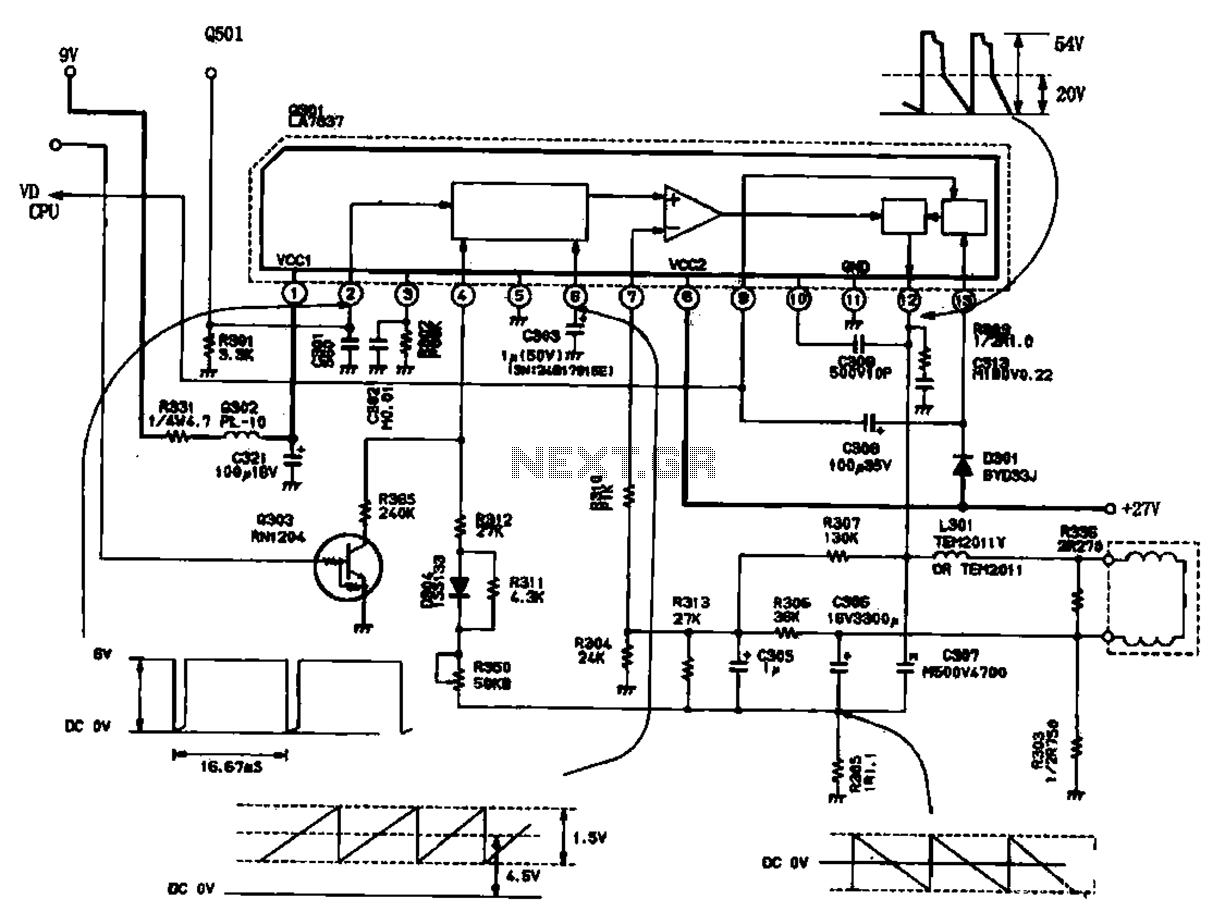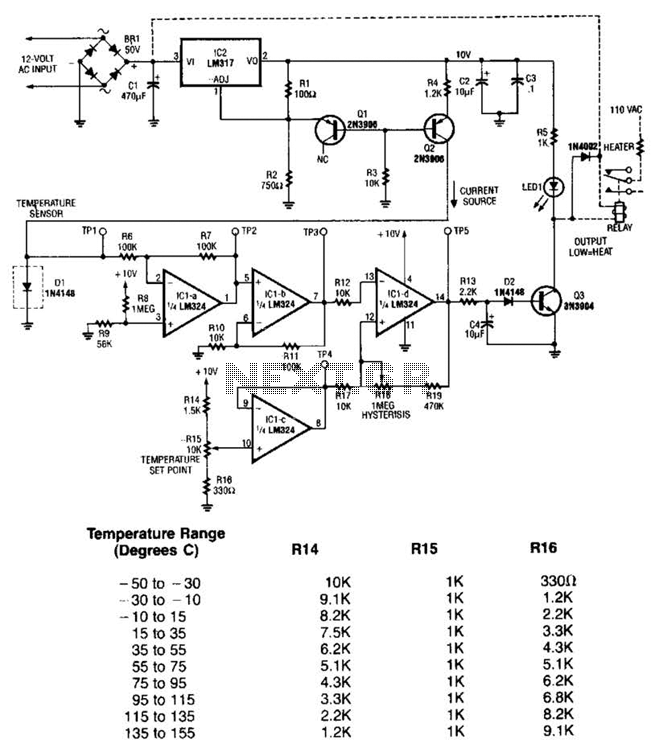
Three-Power-Level Triac Controller Circuit

Three power levels are provided by the two logic inputs of this enhanced circuit. R5, D4, D5, and O2 create a power supply for the logic integrated circuit. These components can be excluded if an alternative low voltage source is accessible.
This circuit is designed to operate with enhanced flexibility by utilizing two logic inputs to generate three distinct power levels. The resistors and diodes (R5, D4, D5, and O2) function collectively to establish a stable power supply for the logic integrated circuit (IC).
R5 acts as a current-limiting resistor, ensuring that the diodes D4 and D5 operate within their safe current ratings. These diodes are crucial for voltage regulation and protection against reverse polarity, which could damage the logic IC. The presence of O2, presumably another passive component such as a capacitor or inductor, further stabilizes the power supply by filtering out noise and providing a more consistent voltage level.
In scenarios where an alternative low voltage source is available, the components R5, D4, D5, and O2 can be omitted to streamline the circuit design. This feature enhances the circuit's versatility, allowing it to adapt to different power supply configurations without compromising performance.
Overall, this circuit exemplifies efficient design principles in electronic engineering, focusing on power management and component selection to optimize functionality while maintaining the potential for customization based on available resources. Three power levels are supplied by the two logic inputs of this enhanced circuit. R5, D4, D5, and 02 form a power supply for the logic IC. They can be omitted if another source of low voltage is available.
This circuit is designed to operate with enhanced flexibility by utilizing two logic inputs to generate three distinct power levels. The resistors and diodes (R5, D4, D5, and O2) function collectively to establish a stable power supply for the logic integrated circuit (IC).
R5 acts as a current-limiting resistor, ensuring that the diodes D4 and D5 operate within their safe current ratings. These diodes are crucial for voltage regulation and protection against reverse polarity, which could damage the logic IC. The presence of O2, presumably another passive component such as a capacitor or inductor, further stabilizes the power supply by filtering out noise and providing a more consistent voltage level.
In scenarios where an alternative low voltage source is available, the components R5, D4, D5, and O2 can be omitted to streamline the circuit design. This feature enhances the circuit's versatility, allowing it to adapt to different power supply configurations without compromising performance.
Overall, this circuit exemplifies efficient design principles in electronic engineering, focusing on power management and component selection to optimize functionality while maintaining the potential for customization based on available resources. Three power levels are supplied by the two logic inputs of this enhanced circuit. R5, D4, D5, and 02 form a power supply for the logic IC. They can be omitted if another source of low voltage is available.





